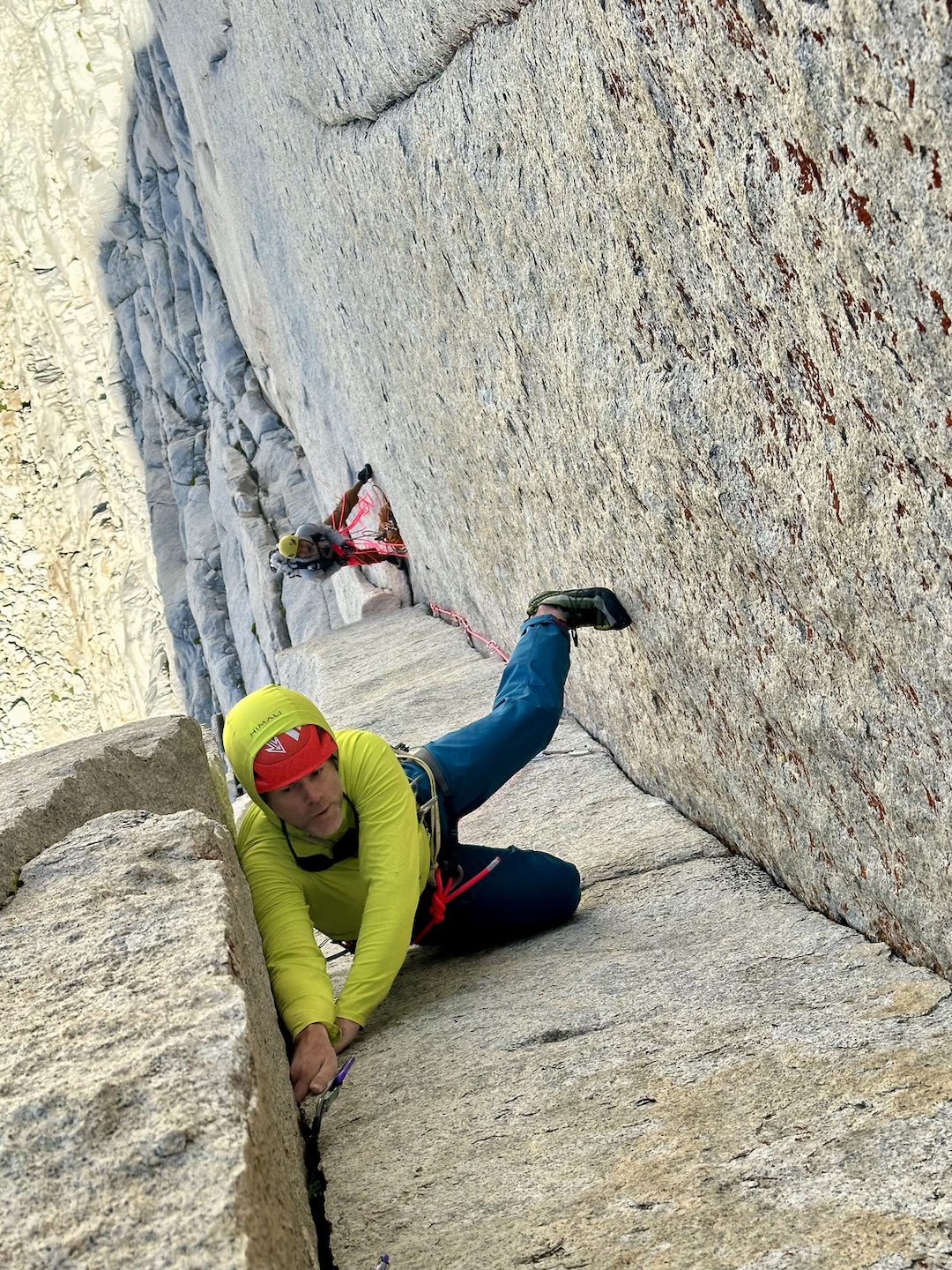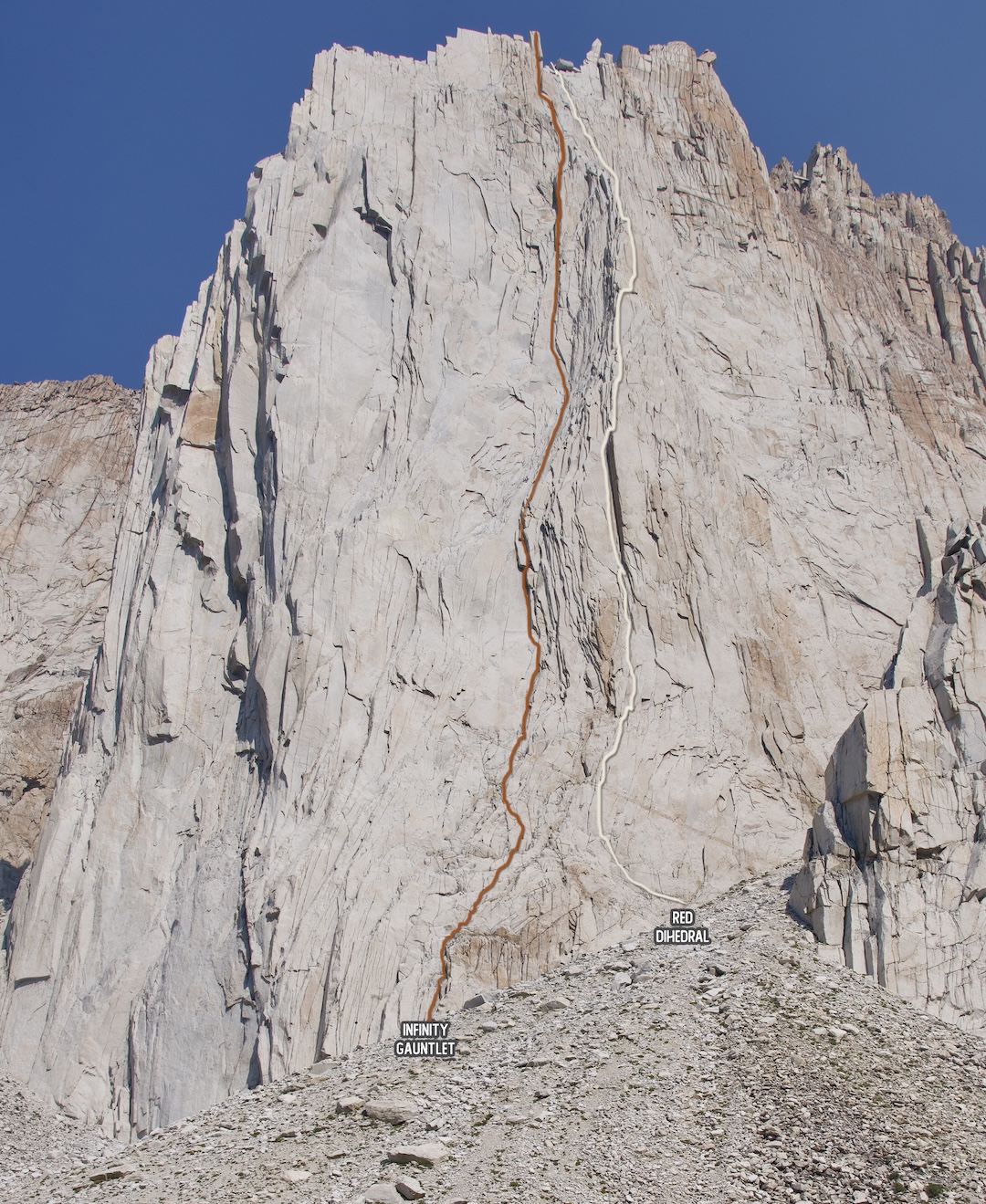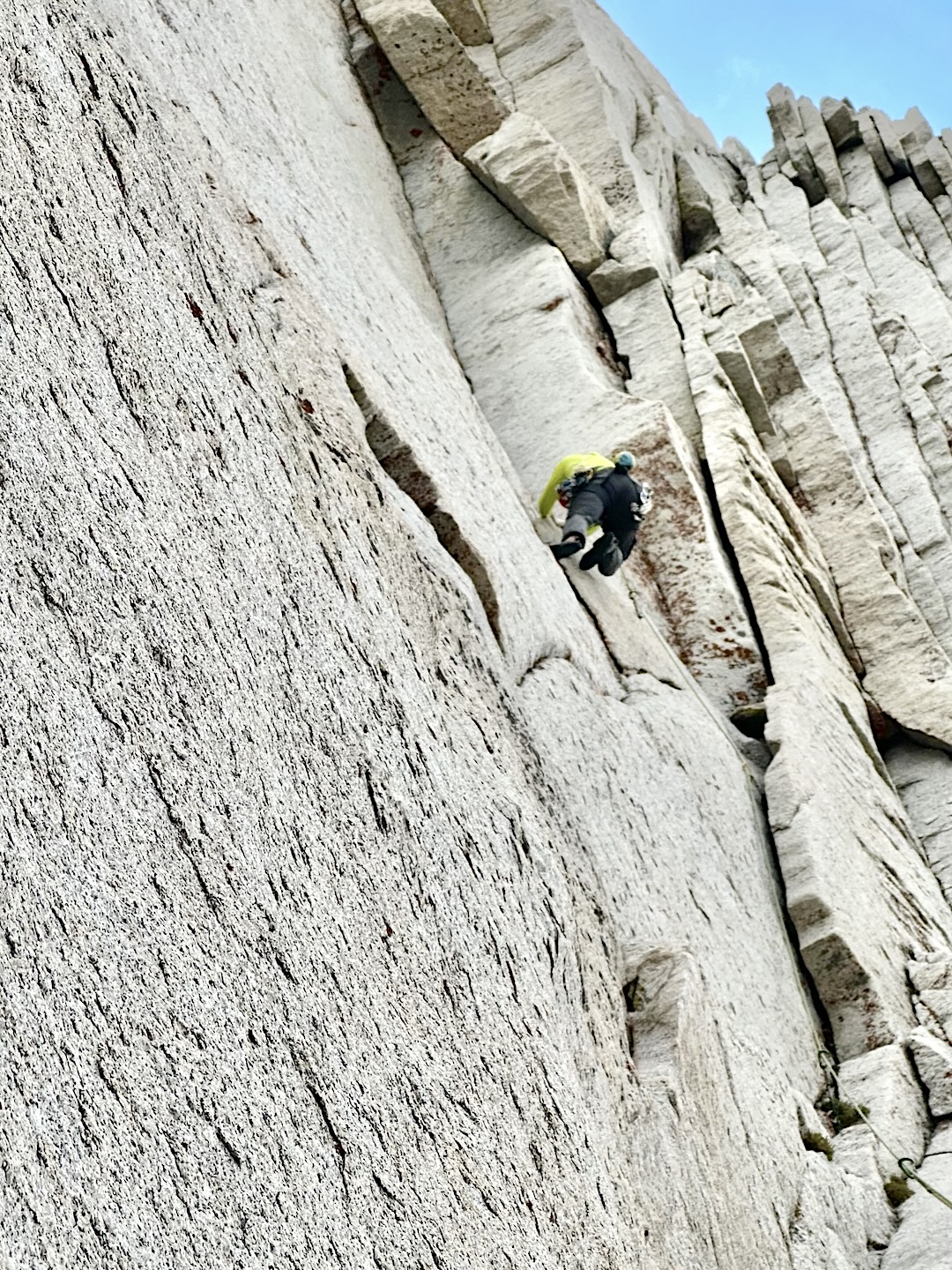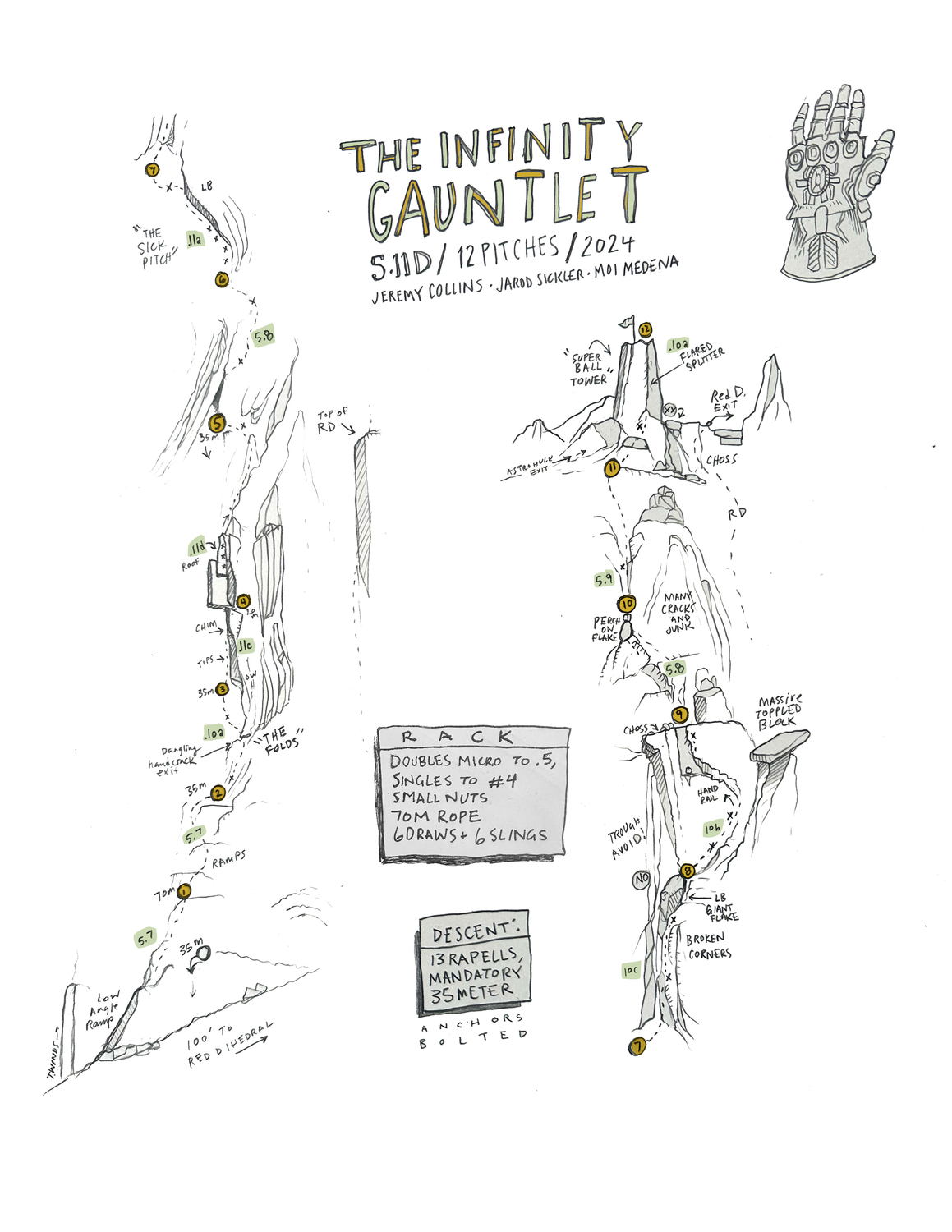The Incredible Hulk, Infinity Gauntlet
California, Sierra Nevada, Eastern Sierra, Little Slide Canyon
It’s a funny story: My first time hiking in to climb the Incredible Hulk was in 2003 with my friend Allen Currano. He caught wind of a prank I was going to pull, and he found a way to meet me at my own juvenile level. We both changed into spandex Spider-Man costumes at the base and did probably the first team Marvel superhero ascent of the peak. Other lighthearted ascents followed as I fell in love with the place, including a stimulating ski-in February ascent of Beeline with Chris McNamara.
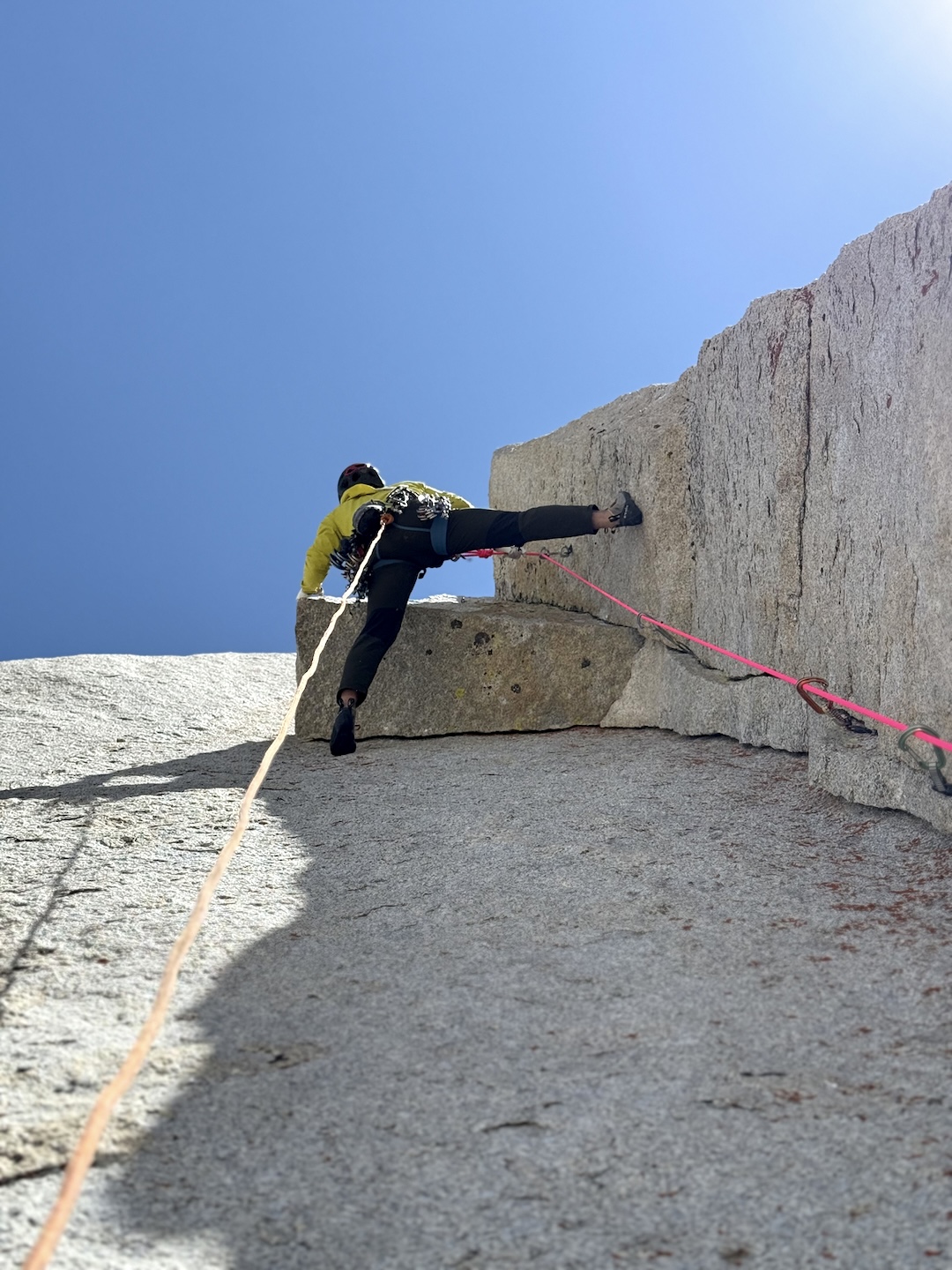
In the spring of 2024, when I sent a note to prolific Hulk climber Dave Nettle with an idea for a new line right up the middle of the face, he replied with some advice and gave his blessing: “If you are motivated, why not go explore the possibilities there? Go get it, amigo!” My longtime partner Jarod Sickler also has a Hulk crush, and he was quick to join the effort. Moi Medina, a part-time DJ and full-time history professor in Los Angeles, was headed to Tuolumne at about the same time, but when I told him what we had in mind, he quickly rerouted.
We left the ground with low expectations for rock quality: The line is the obvious weakness up the center, so for all we knew there was a great reason it hadn’t been climbed. Fortunately, we found the choss manageable and the short sections of crunchy rock cleaned up without too much hassle.
Starting about 100’ left of the Red Dihedral (12 pitches, IV 5.10, Bard-Farrell-Locke, 1975) and about 100’ right of Tradewinds (9 pitches, IV 5.11+, Davis-Nettle, 2006), we stayed committed to not getting pulled into the “folds” on our right, an accordion series of tight dihedrals that looked like a shattered Devils Tower. In the end, the line was mostly moderate, like its popular neighbor, with short, punchy cruxes and fantastic, airy positions. Notably, pitch four offered a tips layback (5.11c) leading into a bomb-bay chimney, and pitch five had a 5.11d boulder problem (the crux of the route) on a hanging arête. The final pitch (5.10), a flaring hand crack, finished up a spindly, stand-alone blocky tower.
In all, Infinity Gauntlet (12 pitches, IV 5.11d) took us two long weekends to establish. We drilled 17 protection bolts on lead. While our primary goal was to create a quality route, our secondary goal was to create a better descent option for Red Dihedral than the standard scramble-to-single-rappel-to-loose-1,000-foot-gully option. There are 13 rap stations straight to the ground that double as belays on the way up; we added a rappel station halfway up the first 70m pitch to ensure no rap was longer than 35m.
The harder pitches looked to be avoidable via variations to the right (which would need some serious cleaning to be safe). For anyone that is interested in establishing said variations: A) Have at it, and B) learn from us and avoid doing so during high season when other parties are around.
— Jeremy Collins


